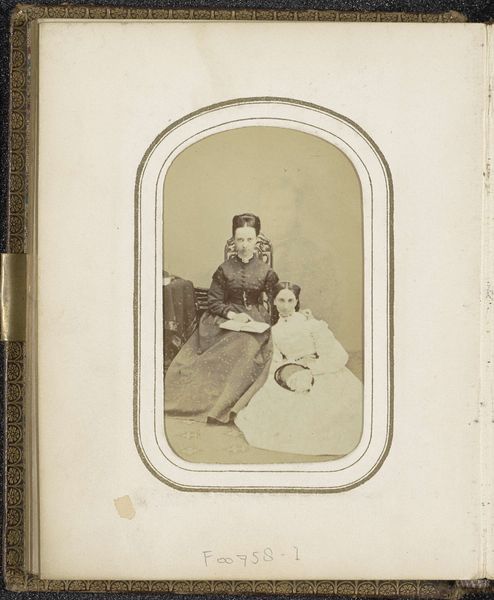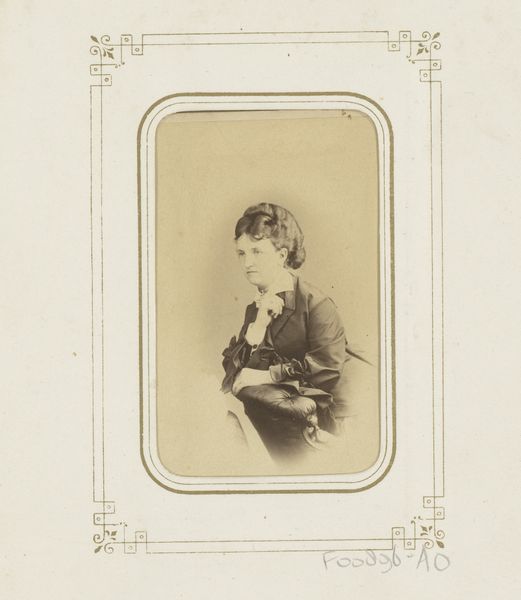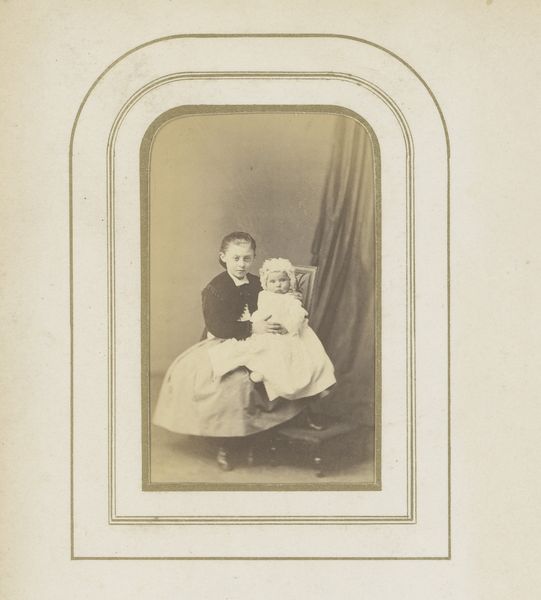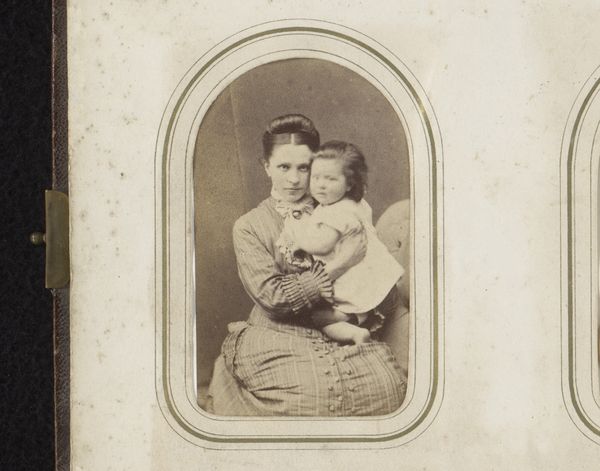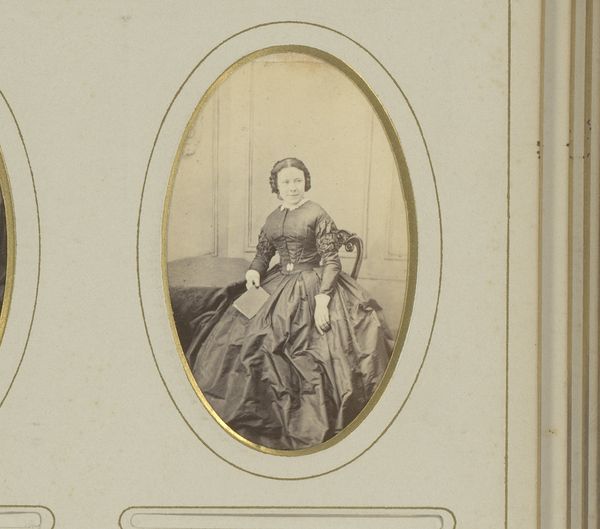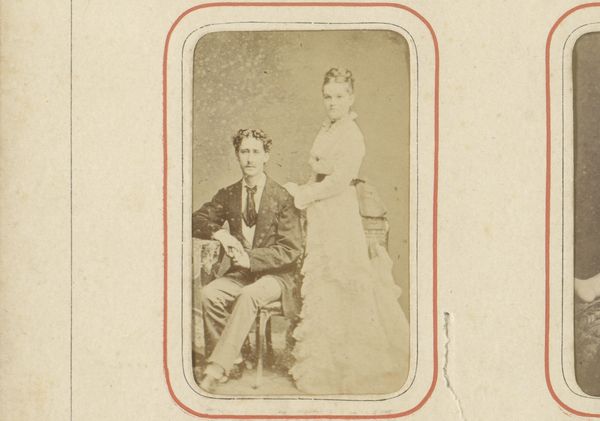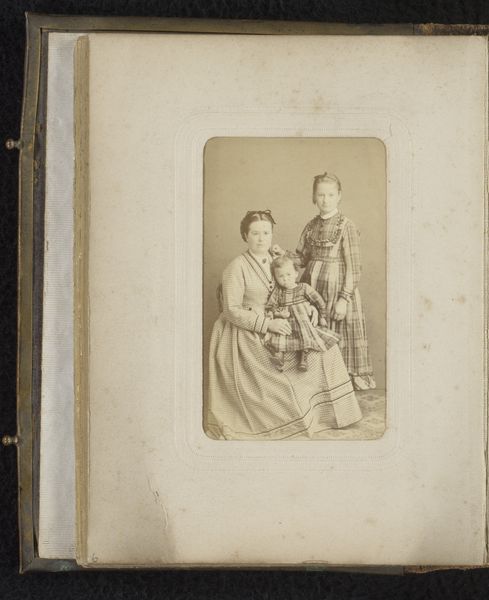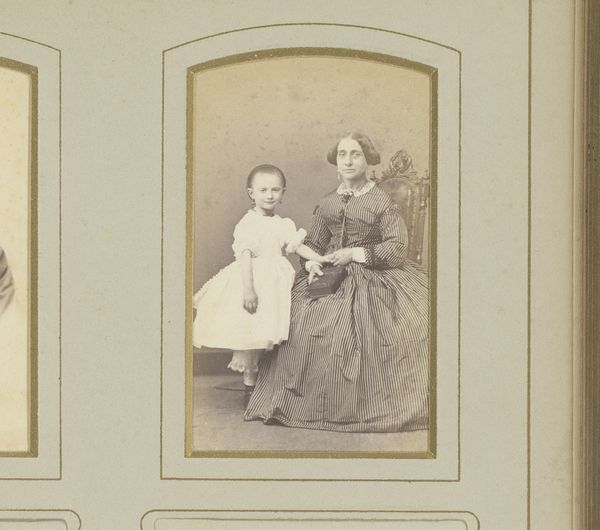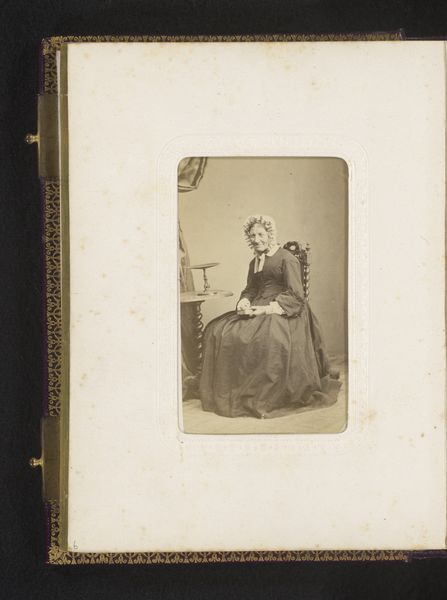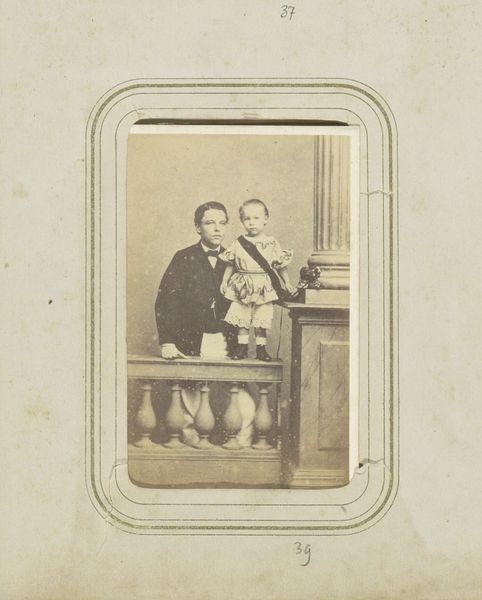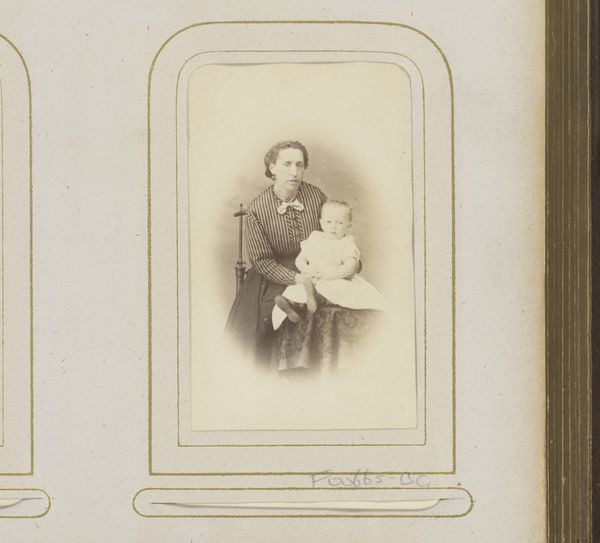
#
aged paper
#
toned paper
#
light pencil work
#
vintage
#
mother
#
pencil sketch
#
coloured pencil
#
underpainting
#
19th century
#
watercolour illustration
#
watercolor
Dimensions: height 92 mm, width 57 mm, height 101 mm, width 62 mm
Copyright: Rijks Museum: Open Domain
Editor: Here we have an interesting work, titled "Portret van een vrouw met baby W.C. Ligtenberg op schoot" by H.J. Busé, created sometime between 1862 and 1885. It appears to be a watercolour illustration on toned paper. I am struck by the simple, yet almost melancholic composition. What can you tell me about it? Curator: From a formal perspective, observe the interplay of light and shadow, specifically the even tonal gradations which serve to model both figures and background with subtle variations that suggest depth. The oval crop within the larger rectangular format isolates and focuses the attention, guiding the eye along the contours of the two subjects. Note, also, the economy of means with which Busé achieves representation. The work balances on a tension between meticulous depiction of textures and simplified or abbreviated treatment of areas in shadow. The slightly degraded state of the image contributes an additional layer of meaning: How might we consider this artifact within broader conversations about age, authenticity, and the aesthetic of the imperfect? Editor: I see what you mean about the deliberate focus within the oval. The artist doesn't try to add too many details or distractions. Curator: Indeed. Now, consider the texture created by the layering of pencil and watercolour. The artist seems concerned with creating both a representational likeness and engaging in pure mark-making on the page. Do you see that? Editor: Yes, I can see the sketch-like qualities even through the watercolours, so it’s not trying to be purely illusionistic. Thanks, that really shifts my understanding! Curator: And it invites us to reflect not only on what is represented, but the how. That attention to the properties of the medium itself, you see, can be the most illuminating point of entry into any artwork.
Comments
No comments
Be the first to comment and join the conversation on the ultimate creative platform.
